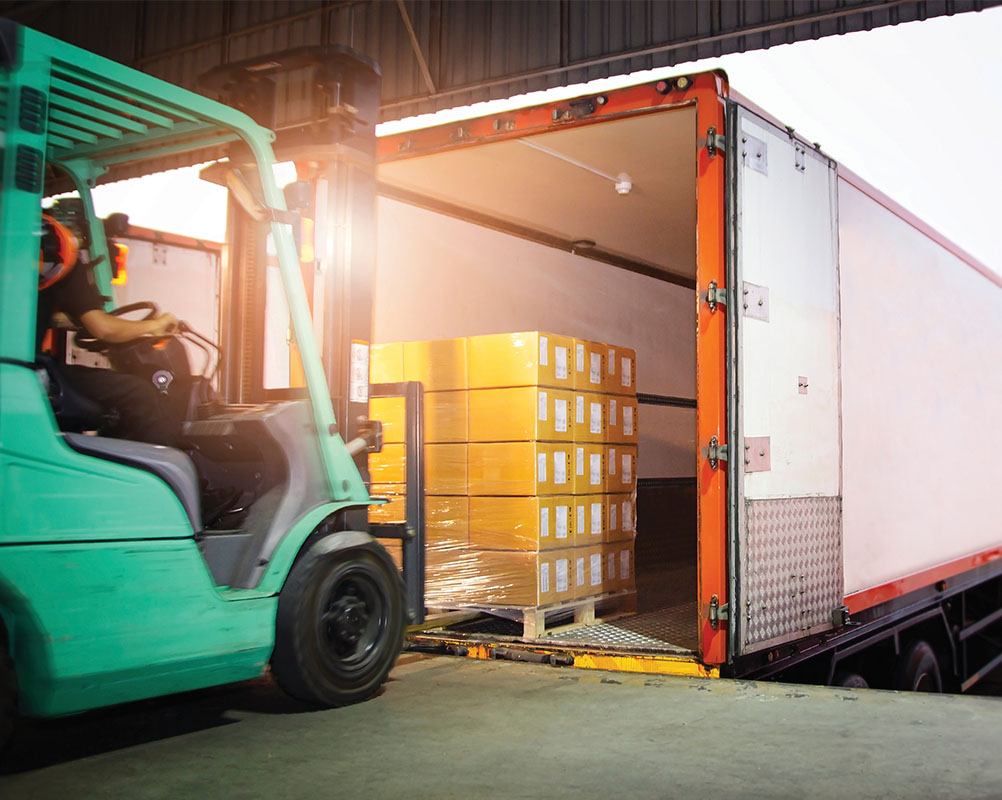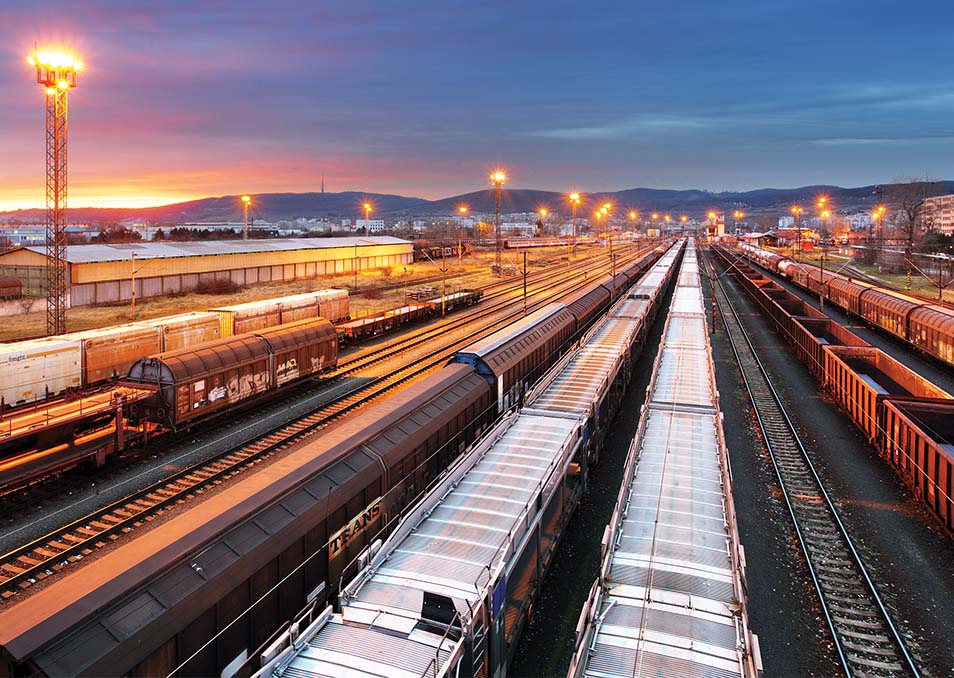This article was published in the March 2024 issue of Pet Food Processing. Read it and other articles from this issue in our March digital edition.
The state of transportation offers a constant scenario of evolving needs and problems to solve. Pandemic turbulence continues to generate a multitude of complexities including supply chain, import, freight, port congestion, warehouse availability and labor issues.
“We have seen a shift from long lead times and shortages to now a flipped view of over-supply and drag on higher inventories,” said Matt Wood, trade execution manager, Scoular, Omaha, Neb. “These have long tails and higher inflation to complicate things more. There are a lot of moving pieces.”
The resiliency of America’s supply chain is at odds with persistent challenges of maintaining a committed workforce, supporting and navigating aging infrastructure, and holding trading partners accountable. These issues are now compounded with tensions occurring in the global marketplace, according to the American Feed Industry Association (AFIA), Arlington, Va.
Economic issues are far-reaching with the ongoing economic slump in China impacting business globally. Frequent changes in tariffs, regulations and evolving political climates create an unstable and reactive environment for business. This includes navigating border or security issues as well as dealing with the impact(s) of regional conflict, making it critical that pet food manufacturers stay alert and review backup plans often.
“We have seen a shift from long lead times and shortages to now a flipped view of over-supply and drag on higher inventories,” said Matt Wood, Scoular.
Transportation is also a major contributor to industry members’ environmental footprints, including that of Scoular. To address this facet of the issue, the company has made investments in building out rail infrastructure to prioritize rail miles over truck freight, as rail creates one-third of the emissions of long-haul trucking. It also uses software to monitor the fuel efficiency of its truck fleet, a valuable resource to determine when to replace its fleet vehicles with more efficient options.
E-commerce demand
During the pandemic, e-commerce ramped up from “nice to have” to a necessity overnight. Just a few years later, e-commerce remains a necessity of convenience, one that continues to complicate transportation logistics with shortages of labor, drivers, air capacity, gas and routes adding to the intricacies. Not to mention the costs of customer service to explain late deliveries.
The American Trucking Association (ATA) projects the driver shortage will worsen. ATA’s For-Hire Truck Tonnage Index showed 2023 as the worst year for freight since 2020. Parts and labor expenses also rose 1.9% in the third quarter of 2023, according to trucknews.com. The ATA expects the trucking industry alone will need to hire 1.1 million new drivers over the next decade, an average of 110,000 annually, to replace retiring drivers and keep pace with economic growth. Leah Wilkinson, vice president of public policy and education, AFIA, said this is just one industry competing for qualified labor, with every US industry facing the same challenge.
With a 93.8% retention rate, Scoular views its drivers as active voices who assist with recruiting new drivers. This includes creating opportunities for employees who may be interested in driving a commercial vehicle and assisting with entry-level driver training.

The American Trucking Association projects the trucking industry will need to hire 1.1 million new drivers over the next 10 years to keep pace with retiring drivers and economic growth.
| Source: ©SIWAKORN1933 – STOCK.ADOBE.COM
Port congestion and weather
During the pandemic and continuing afterward, there have been stories of ships waiting at sea to load and unload, resulting in delayed arrivals and departures. Inconsistent container availability also keeps manufacturers guessing.
A June 2022 Global Supply Chain Pressure Index analysis backed by the National Association of Manufacturers found a work stoppage of 15 days at Los Angeles and Long Beach ports could deplete $500 million dollars per day. After months of finger pointing regarding who was at fault for the delays and accusations of deliberate work slows, the International Longshore and Warehouse Union and the Pacific Maritime Association announced a tentative agreement for a 6-year contract in June 2023.
Regular slowdowns at West Coast ports necessitated finding a backup plan. To reduce reliance on West Coast ports, some manufacturers chose routes through the Panama or Suez canals. But drought conditions causing inconsistent water levels necessitated manufacturers lighten shipping loads to move through the canals’ lower waters.
Aging infrastructure
No conversation about the state of transportation can take place without discussing infrastructure. The Report Card for America’s Infrastructure created by the American Society of Civil Engineers (ASCE), Washington, DC, paints a situation meriting concern. In 2021, ASCE awarded the nation’s infrastructure a collective grade of C- in the 18 categories of American infrastructure. Although passing, this is the first time American infrastructure is out of the D grade range.
Rails — Grade: B
- In 2018, a total of 1.7 million ton-miles per day were transported on the US freight rail network.
- Approximately 140,000 rail miles are operated by Class I, II and III freight railroads.
Ports — Grade: B
- More than 300 coastal and inland ports are drivers of the US economy.
- The success of a port is reliant on the infrastructure outside its gates.
Roads — Grade: D
- Forty percent of the system is in poor or mediocre condition, creating wasted time and increased fuel costs.
- The nation’s highways move 72% or nearly $17 trillion of the nation’s goods and services.
Inland waterways — Grade: D+
- The nearly 12,000 miles of navigable waterways move nearly 830 million tons of cargo annually.
- One barge on the inland waterways can move as many as 70 tractor trailers or 16 train cars.
Trade and labor disputes
Labor union disputes impact transport on rail and at port and border crossings, and strikes are becoming a tool for negotiation as well as a bargaining advantage. In Europe, we’ve seen this materialize in ongoing farmer protests and in transportation shutdowns, as well as with truckers striking in Canada. In 2022, the United States found itself in the middle of a rail strike. In 2023, strikes were used to communicate discontent by municipal public workers, airline pilots, DHL and UPS workers, and US automakers.
With problematic and persistent labor disputes, AFIA has joined others within the Agricultural Transportation Working Group to call on Congress and the Biden Administration to intervene quickly when labor disputes occur to swiftly reach a peaceful resolution. AFIA is working proactively within its membership to identify other potential supply chain challenges, such as having countries that are sole manufacturers of certain necessary goods needed for the manufacture of pet food bring solutions to the administration before they become problems.
Elections and legislation
November 2023 marked the two-year anniversary of the $1 trillion Infrastructure Investment and Jobs Act. Two years into the investment, $306 billion has been added into state coffers and direct investment projects, according to research from the nonprofit Brookings Institution, Washington, DC. Moving forward, there will be additional awards to improve the national infrastructure.

Manufacturers have been forced to find alternative shipping routes that have helped with but not solved the shipping issues.
| Source: ©TTSTUDIO – STOCK.ADOBE.COMBecause transportation is already challenging, groups like the Pet Food Institute (PFI), Washington, DC, work to ensure legislation like the Infrastructure Investment and Jobs Act is enacted to ease transportation challenges. Over the last two years, PFI has supported the Ocean Shipping Reform Act (OSRA). PFI also worked with a coalition to avoid a rail strike and collaborated with its ag coalition partners to reopen the El Paso and Eagle Pass rail corridors, resuming commerce between the United States and Mexico.
PFI is monitoring activity on a proposal in California called the Indirect Source Rule (ISR) for Commercial Marine Ports by the South Coast Air Quality Management District (SCAQMD). The Proposed Rule 2304 would establish requirements to reduce emissions from mobile sources related to marine port operations at the Los Angeles and Long Beach ports.
“As there are limited options to reduce emissions through technology, this proposal could effectively cap the amount of goods moved through the two ports,” said Dana Brooks, president and chief executive officer of PFI. “Advocating for a stable, safe and fair transportation system is critical to ensuring important goods like pet food reach consumers in a timely manner. PFI will continue to advocate for legislation supporting a robust, US friendly transportation system that benefits pet food makers and consumers alike.”
Wrangling data
The transportation category is awash in data applications offering the benefit of transparency to shipping clients and the potential to improve communication throughout the transaction while offering real-time updates to customers and consumers.
Scoular is putting technology to use with the installation of Motive fleet management telematics and cameras in the company’s commercial vehicles. The tech provides information with regulatory compliance, driver safety, fuel performance, and real-time data for customers on the status and location of the current load. The use of digital tools creates efficiencies for shippers, carriers and customers, including real-time tracking and expedited document processing, which offers greater connection and time management for all parties.
But without an advanced tracking system, data created in mass can become overwhelming quickly, and data from multiple systems lies at risk of becoming siloed. KMPG, Toronto, recommends looking at specific use cases to address data quality issues. These use cases can be applied to help users see how to make data useful to each department throughout the organization. This allows for quicker response to requests, reduction of errors and inefficiencies, and improved productivity through problem solving to create a new paradigm for smarter supply chain management.
In 2024 and beyond, it will remain up to the entire pet food industry to diversify transportation options and create a plan with supply chain redundancies and ample backup channels, including regional transportation hubs. Manufacturers can also partner with lobbying bodies and large entities to take on major challenges such as infrastructure and legislation that will continue to impact the state of transportation and the industry at large.
Find more articles related to pet food and treat distribution.




